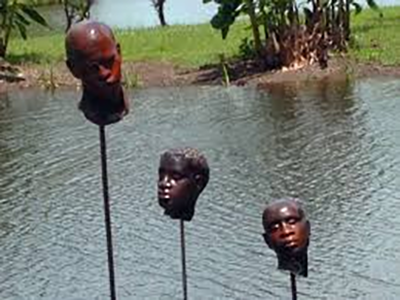By Don Valentine
The German Coast Uprising, also known as “Andry’s Rebellion”, was the largest revolt of Black slaves in the United States. The land was initially settled by Germans, and dubbed “The German Coast. It began on Manual Andry’s plantation, near New Orleans. The leader was Charles Deslondes, a slave who worked as a driver (overseer) on a plantation. The blog evergreen plantation.org described a “Planter,” as usually a White man but sometimes a promoted slave hand. Charles, a mulatto enslaved by Manuel Andry, was a Haitian inspired by the Haitian Revolution of 1791.
Originally he was owned by the Deslondes family who fled Haiti in the wake of the 1804 revolution. Black Past recorded, “Following months of secretive plotting, Charles led a group of enslaved people from the surrounding plantations toward New Orleans. The group included enslaved people born in the US, the Caribbean, and those newly brought from Africa. They left the plantation with a few guns, pikes, shovels, and other rudimentary tools, but most importantly, with the courage and determination to free themselves from the shackles of slavery.”
US History Scene annotated, “Witnesses stated that Deslondes united slaves on his plantation with runaways who formed a maroon society in the nearby swamps. The rebellion also occurred during harvest, when slave owners in the South often gave slaves more free time. This brief period of relative autonomy for slaves is believed to have provided Deslondes an opportunity to organize.”
Charles led his squad of rebels to kill Master Andry with an ax. They scavenged the plantation for fighting equipment that included: pikes, axes, and a few firearms. A remarkable achievement was organizing over 500 African people who spoke 50 different languages. All the early planning came to fruition; the fighters, carrying banners, marching to the beat of drums, were broken into sub-units with leaders on horseback. For two days they wreaked havoc on the region, setting plantations on fire as they marched towards New Orleans.
The governor called for army forces, and General Wade Hampton, leader of the militia, assembled two companies of volunteers and navy sailors to crush the uprising. Nearly 700 soldiers—more men than the number of rebels—crushed the rebellion. A fierce punishment followed a brief tribunal. Smithsonian Magazine wrote, “Their heads were cut off and placed on poles along the river to frighten and intimidate other slaves…” This display of heads on spikes stretched for over 60 miles. A dismal side note: several slaves, imitating Judas Iscariot, gained their freedom by providing information. Apparently, treachery was the guaranteed key to emancipation.
